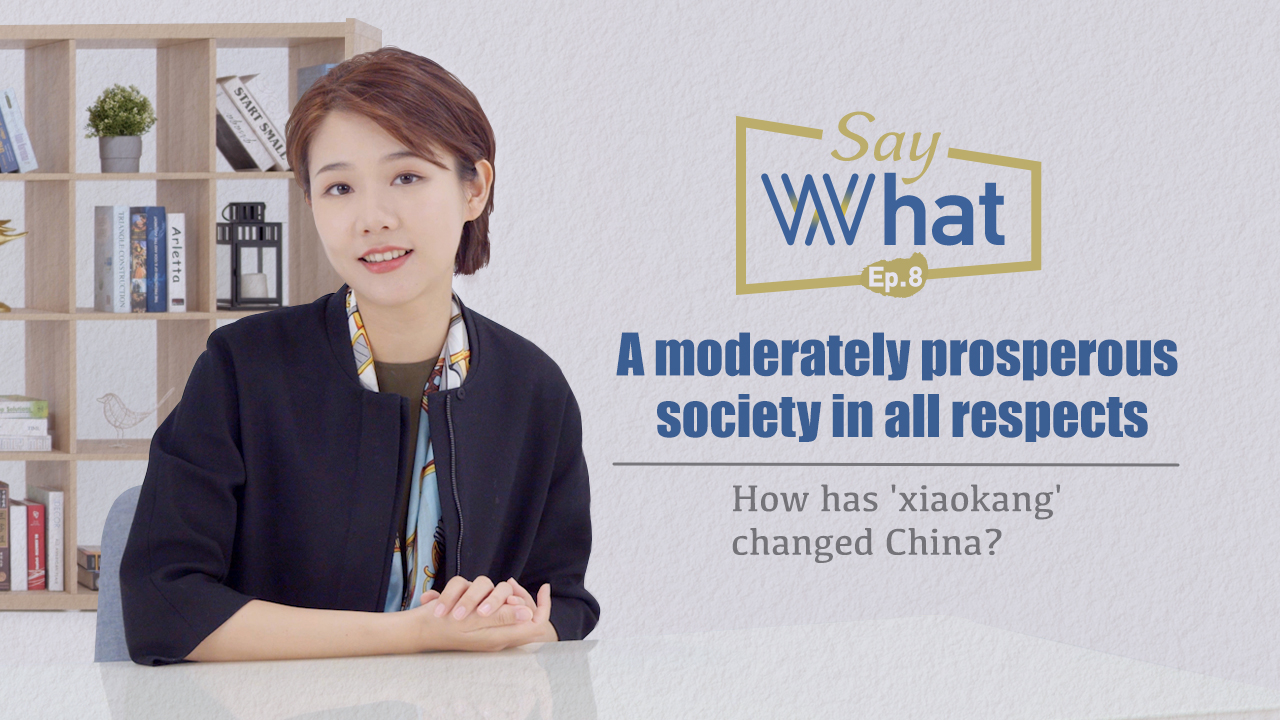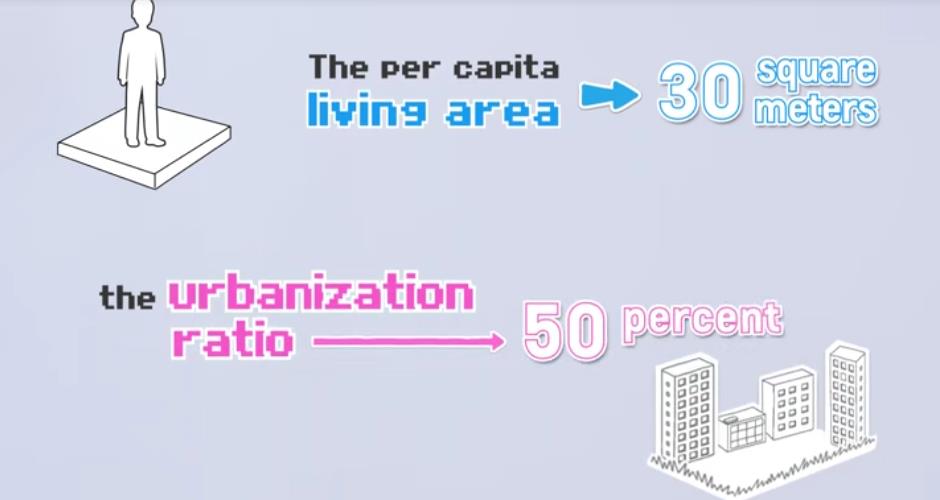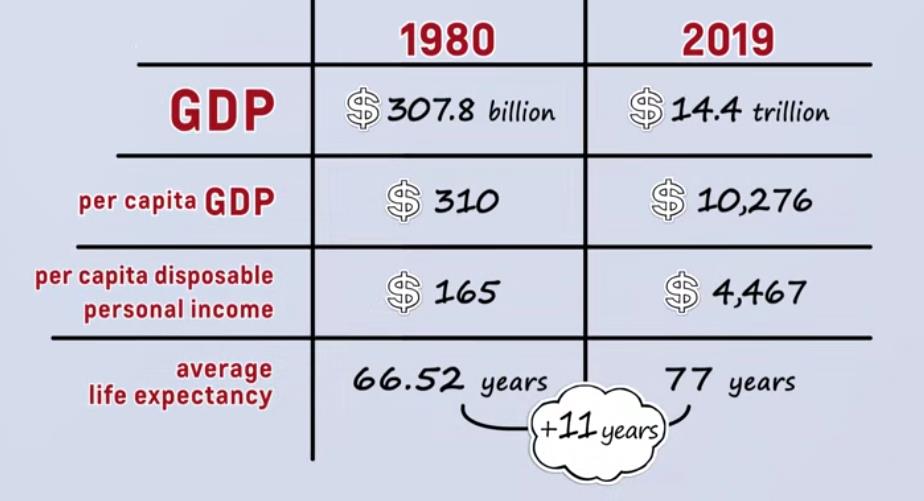04:58

Editor's note: SAY WHAT? is an original video series CGTN Digital presented for the upcoming Two Sessions. Each episode introduces one key expression that will be frequently mentioned and discussed during the sessions. We hope this is an easier way for you to better understand China's important annual political event. The key expression in this episode: Xiaokang.
You've probably heard the Chinese term "xiaokang" hundreds of times this year, because China aims to build a xiaokang society in all respects by the end of 2020.
In English, xiaokang means "moderately prosperous." It refers to a status whereby people living in the country are neither rich nor poor. They've got sufficient living necessities and can pursue a better life.
Based on the world's modernization measuring index system and conditions in the country, China has set out 10 criteria: national per capita GDP should exceed 3,000 U.S. dollars; the national Engel coefficient index – the proportion of income spent on food – should be lower than 40 percent; the per capita living area for urban residents should reach 30 square meters; the urbanization ratio should reach 50 percent, among others.

The per capita living area for urban residents should reach 30 square meters and the urbanization ratio should reach 50 percent. /CGTN
The per capita living area for urban residents should reach 30 square meters and the urbanization ratio should reach 50 percent. /CGTN
China set the xiaokang target in 1979, aiming to complete the mission by 2020. During the past 40 years, China has moved steadily towards this goal.
In 1980, China's gross domestic product (GDP) was about 307.8 billion U.S. dollars, the per capita GDP was 310 dollars and per capita disposable personal income was 165 dollars. That sum of money was just enough to meet people's basic demand on food and clothing.
In 2019, China's GDP was about 14.4 trillion dollars, its per capita GDP exceeded 10,000 dollars for the first time and the per capita disposable personal income was 4,467 dollars. These figures were close to those of the high-income countries.
In the past four decades, the average life expectancy of Chinese people increased by about 11 years.

The table shows China's GDP, per capita GDP, per capita disposable personal income and the average life expectancy of Chinese people in 1980 and 2019. /CGTN
The table shows China's GDP, per capita GDP, per capita disposable personal income and the average life expectancy of Chinese people in 1980 and 2019. /CGTN
China has built the world's largest social security system and medical insurance system for its 1.4 billion population.
The poverty headcount ratio in rural areas has sharply fallen, from 97.5 percent in 1978 to 0.6 percent in 2019.
China has made great progress in building a moderately prosperous society in all respects.
According to the National Bureau of Statistics, the completion rate of xiaokang increased from 59.6 percent in 2000 to 80.1 percent in 2010, representing an average annual increase of 2.05 percentage points.

China's poverty headcount ratio in rural areas has fallen from 97.5 percent in 1978 to 0.6 percent in 2019. /CGTN
China's poverty headcount ratio in rural areas has fallen from 97.5 percent in 1978 to 0.6 percent in 2019. /CGTN
"Farmers' living quality defines the final result." Lifting all people out of poverty must be completed before China achieves the goal.
To encourage local officials to help the 5.51 million people remaining in rural poverty, their efforts and achievements are reflected in their work assesment. As a result, many local officials, rather than professional anchors, are frequently seen now in livestreaming events across the country, promoting sales of local agricultural products.
Why does China want to build a moderately prosperous society in all aspects? The answer is to make its people live better.

The completion rate of xiaokang increased from 59.6 percent in 2000 to 80.1 percent in 2010. /CGTN
The completion rate of xiaokang increased from 59.6 percent in 2000 to 80.1 percent in 2010. /CGTN
But China knows this has never been an easy task. China is still the world's largest developing country. Economic development is unbalanced and sometimes inadequate. In medical care, education and housing, China still has a lot to improve.
How to make a better living environment? How to make sure more people benefit from the reform and opening-up policy? These are the challenges China faces.
What measures will be proposed during the upcoming Two Sessions, so as to help China build a moderately prosperous society in all respects in 2020? We will discover the answers very soon.
Anchor: Liu Chen
Editor: Wu Yan, Liu Chen
Copy Editor: John Goodrich
Producer: Zhang Xiaohe
Senior Consultant: Dr. Xia Jixuan
Chief Editor: Chen Ran
Supervisor: Zhang Shilei